Badrinath, nestled in the stunning Garhwal Himalayas, is a holy place in Uttarakhand, India. We’re here to be your guide, offering tips and advice to make your trip to Badrinath more than just a visit – but a journey that touches your soul.
In this blog, we’ll explore Badrinath’s rich history, stories, and traditions. We’ll show you its sacred places, ceremonies, and customs. Whether you’re a religious traveler seeking peace or an explorer looking for breathtaking scenery, Badrinath has something special for everyone.
How to reach:
By Air:
The nearest airport to Badrinath is the Jolly Grant Airport in Dehradun, located approximately 317 kilometers away. From the airport, you can hire a taxi or take a bus to Badrinath.
By Train:
The nearest major railway station to Badrinath is Haridwar Junction, situated around 320 kilometers away. From Haridwar, you can either take a bus or hire a taxi to Badrinath.
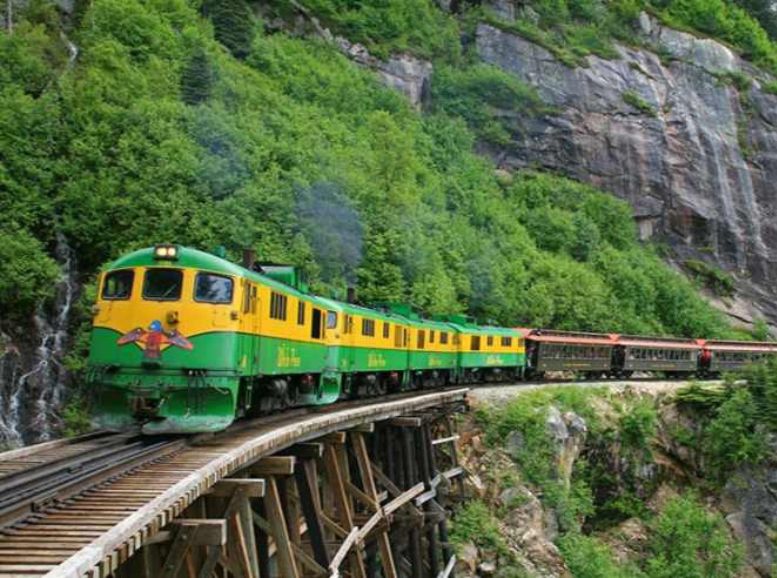
By Road:
Haridwar and Rishikesh serve as major transportation hubs in Uttarakhand. From either of these cities, you can avail of bus services or hire a taxi to Badrinath. The journey takes approximately 10-12 hours, covering a distance of around 320-340 kilometers.
Best time to visit:
Summer (May to June):
- Summer marks the peak tourist season in Badrinath.
- The weather is typically pleasant, with daytime temperatures ranging from 15°C to 20°C.
- This period is ideal for pilgrimages and sightseeing as the roads leading to Badrinath are usually open.
- It’s important to note that the temple opens in May and closes around November, subject to weather conditions.
Monsoon (July to September):
- The monsoon season brings heavy rainfall, leading to travel difficulties due to landslides and road blockages.
- Trekking and outdoor activities may be restricted during this time.
- However, if you prefer a quieter experience and are unperturbed by rain, visiting during the monsoon season is still possible.
Autumn (October to November):
- Autumn is another favorable time to visit Badrinath, especially for those keen on witnessing the changing hues of the surrounding landscapes.
- The weather remains cool and pleasant, facilitating outdoor activities and sightseeing.
- The temple typically closes around November, so plan your visit accordingly.
Winter (December to April):
- Winter brings frigid temperatures and heavy snowfall to Badrinath.
- The town becomes inaccessible due to road closures, and the temple remains shut during this period.
- Nonetheless, if you’re drawn to snowfall and don’t mind the cold, visiting during the winter months can be an option.
Atractions:
Badrinath Temple:
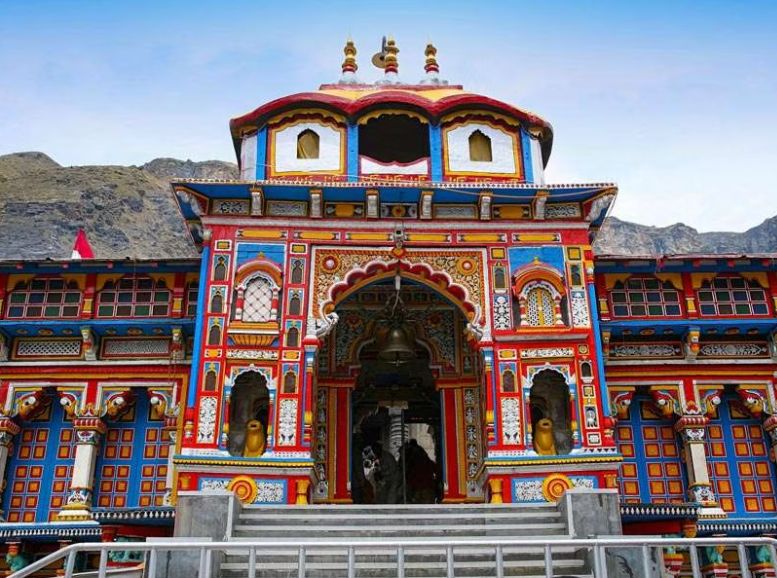
The heart of Badrinath is its ancient Hindu temple, dedicated to Lord Vishnu. This holy place, tucked away in the high mountains, is filled with a sense of peace and spirituality. People of many backgrounds travel here as pilgrims to honor Lord Vishnu. They hope for his blessings to find spiritual growth and escape the cycle of life and death.
Tapt Kund:
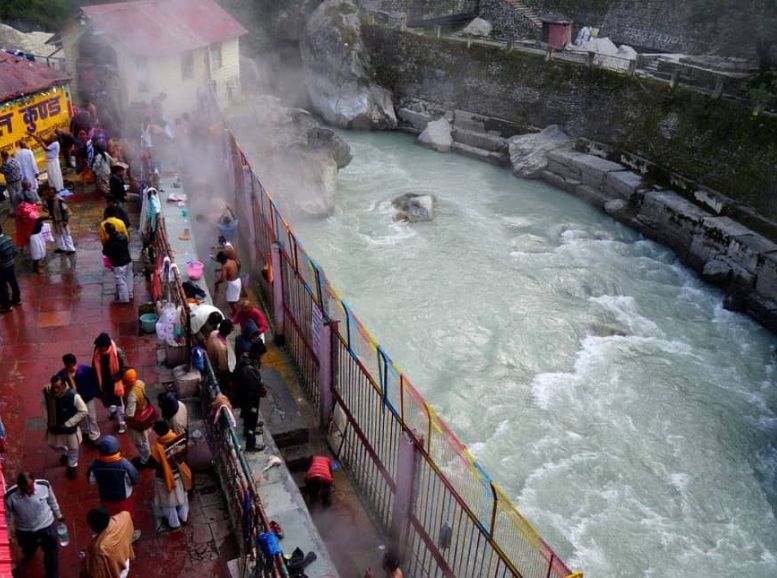
Nestled at the foot of the Badrinath Temple lies Tapt Kund, a natural hot spring revered for its healing magic. For centuries, pilgrims have considered a dip in its sacred waters a way to cleanse the soul and prepare for the divine blessing of darshan (sight) of Lord Vishnu. The warm, mineral-rich waters are believed to possess curative properties for various ailments, making Tapt Kund a popular spot for purification rituals before entering the temple grounds. Legend says the spring itself is the abode of Lord Agni, the Hindu god of fire, adding to its mystical allure.
Neelkanth Peak:
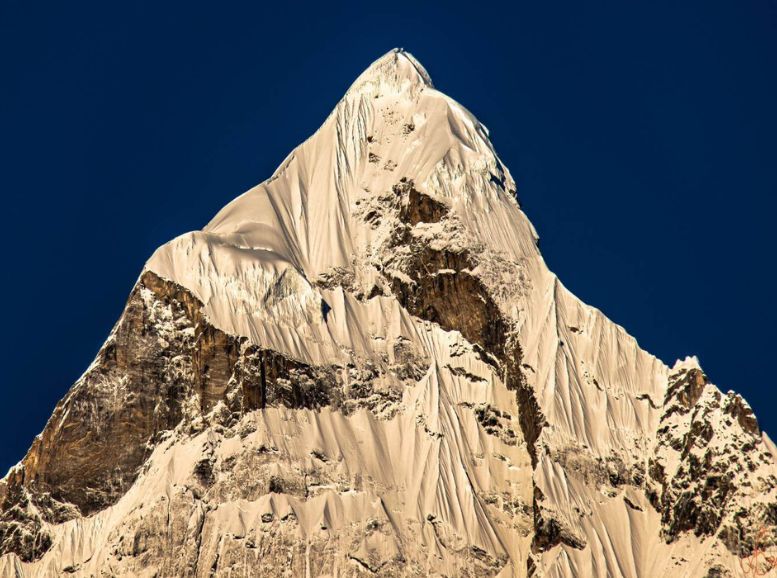
Towering over Badrinath’s skyline is the majestic Neelkanth Peak, a revered abode of Lord Shiva. Cloaked in snow and reaching a staggering 6,597 meters, this peak creates a breathtaking backdrop for Badrinath’s spiritual atmosphere. At dawn and dusk, Neelkanth Peak is bathed in an otherworldly glow, captivating pilgrims and travelers alike with its divine presence and serene beauty.
Charan Paduka:
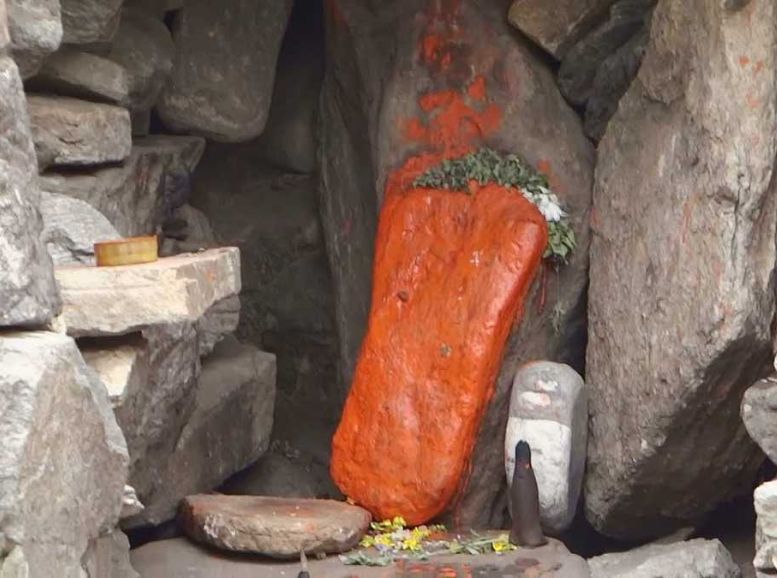
Perched at a challenging yet rewarding altitude of 3,380 meters, Charan Paduka is a sacred rock formation revered for holding the imprints of Lord Vishnu’s feet. A trek through the pristine wilderness surrounding Badrinath leads pilgrims to this holy spot, where they seek blessings and witness the imprint of divine grace left by the Supreme Being. The panoramic vistas from Charan Paduka are nothing short of breathtaking. Snow-capped Himalayan peaks stretch as far as the eye can see, filling the hearts of devotees with a sense of awe and reverence for the divine power that sculpted such a magnificent landscape. Legend says that gazing upon these majestic mountains while standing at Charan Paduka brings one closer to achieving moksha, or liberation from the cycle of rebirth.
Mana Village:
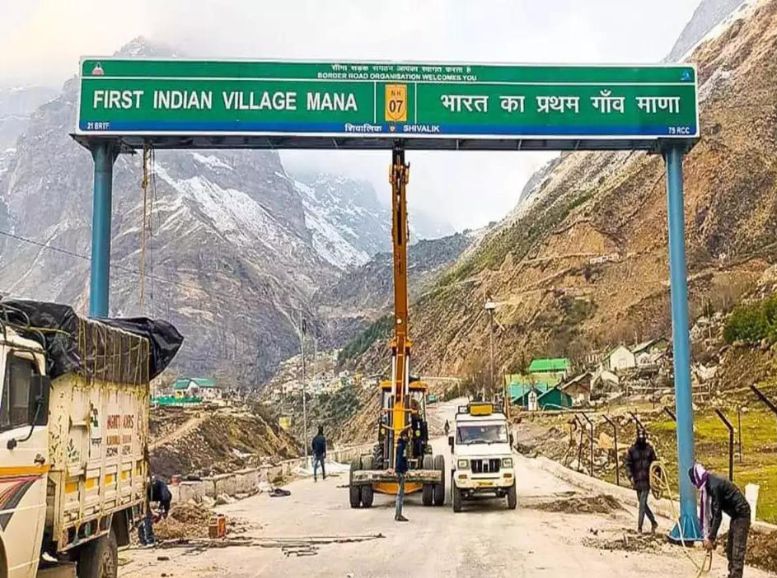
As the last village on the Indian side before the border with Tibet, Mana Village holds a special charm for visitors. Steeped in myths and legends, this little mountain village offers a peek into the traditional life of the Himalayas. Wander its narrow streets lined with simple stone houses, chat with the welcoming locals, and soak up the timeless beauty of Himalayan culture. Mana Village is a great place to try some local specialties like Mana potatoes and kidney beans, and to experience the simple joys of mountain life.
Vasudhara Falls:
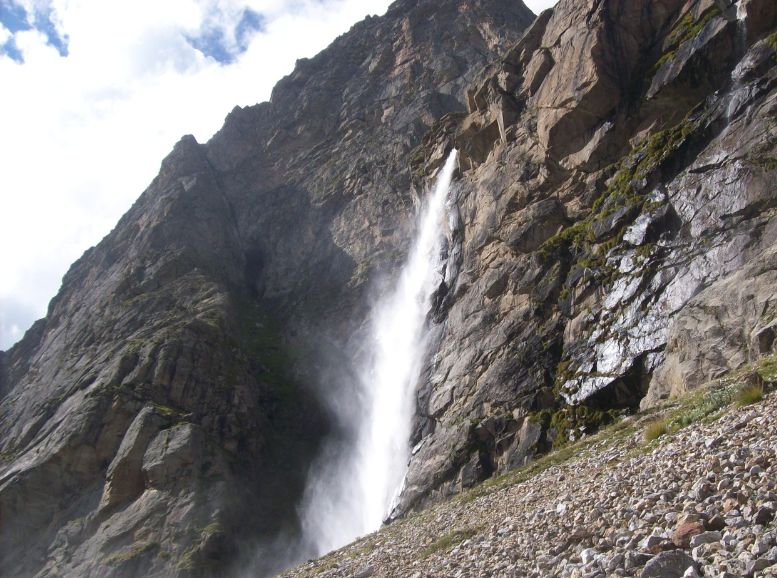
Hidden in the lush greenery near Mana Village, Vasudhara Falls tumbles down a staggering 400 feet. This mesmerizing natural wonder is more than just a pretty sight. Local legends say the cascading waters have the power to cleanse sins and bring good fortune. For those up for the challenge, a trek through rugged mountain paths leads to this majestic waterfall. Pilgrims come here to offer prayers and experience the divine power amidst the thunderous roar of the water.
Vyas Cave:
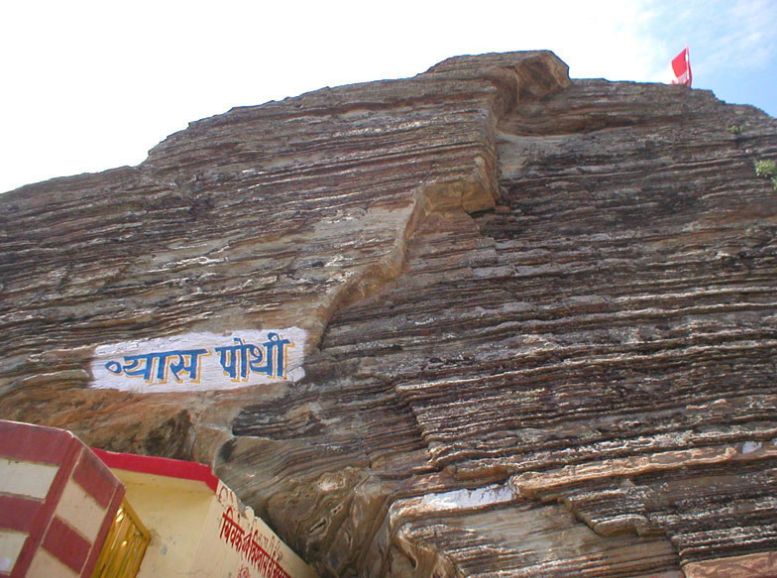
Tucked away in the peaceful surroundings of Badrinath is Vyas Cave, a holy site linked to the wise sage Vyas. Hindus believe Vyas wrote the epic Mahabharata here. Pilgrims and curious travelers visit this quiet cave to honor the sage and gain inspiration from his ancient wisdom. The cave’s peaceful atmosphere is perfect for meditation and reflection, allowing visitors to connect with the deep meanings found in religious texts. Some even believe meditating here can bring a deeper understanding of the universe and their place within it.
Narad Kund:
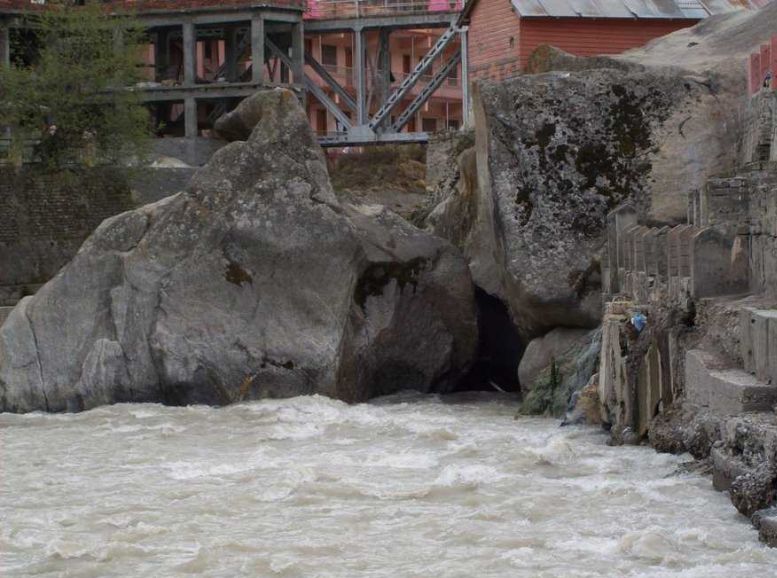
Nestled near Tapt Kund, Narad Kund stands as a natural hot spring renowned for its healing attributes. Legend has it that the revered sage Narad underwent rigorous penance here to attain spiritual enlightenment. Devotees hold faith in the purifying powers of Narad Kund’s sacred waters, believing that immersion washes away physical and mental impurities, facilitating spiritual growth and rejuvenation. Enveloped in the comforting warmth of Narad Kund, pilgrims seek blessings from the divine sage, embarking on a transformative journey of self-discovery and renewal.
Sheshnetra:
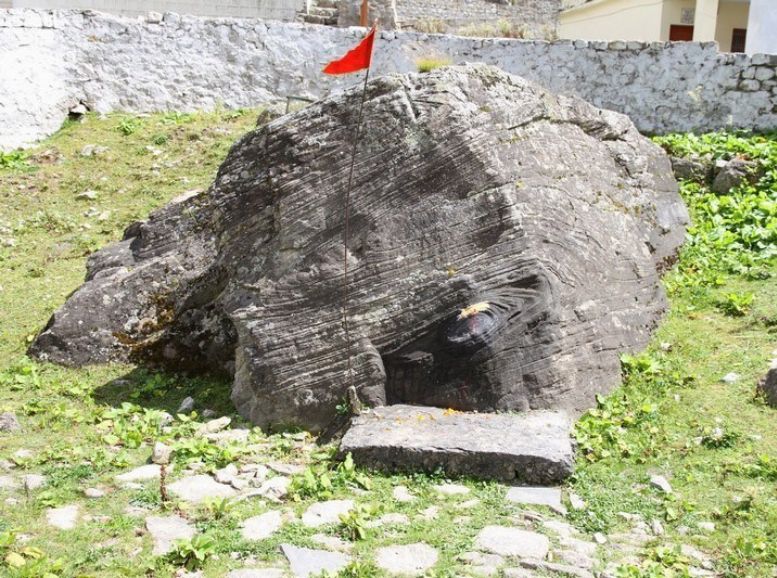
Perched atop the Badrinath Temple, Sheshnetra holds a revered position as a site deeply connected with the serpent deity Sheshnag. According to ancient lore, Sheshnag’s divine hood provides a protective shelter for Lord Vishnu during his divine repose. Pilgrims flock to this natural rock formation, admiring its striking resemblance to a serpent’s hood, and beseech blessings for guidance and spiritual fortitude on their sacred pilgrimage. Enveloped in the aura of sanctity, they find solace in the presence of Sheshnetra, forging a profound connection with the divine as they embark on their spiritual odyssey through the Himalayan realms.
Satopanth Lake:
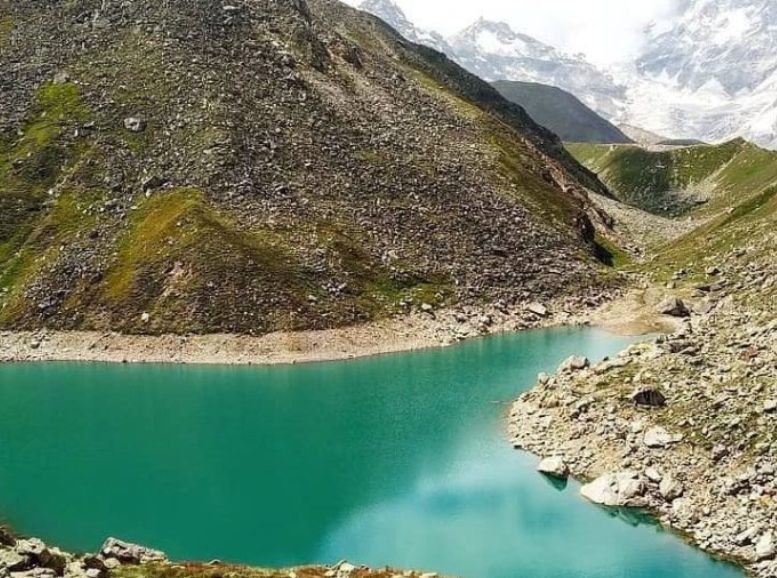
Nestled amid the rugged peaks of the Garhwal Himalayas, Satopanth Lake emerges as a tranquil glacial expanse steeped in mythos and spiritual reverence. It’s enshrined as the divine abode of the Hindu trinity Brahma, Vishnu, and Mahesh, adding to its sanctity as a revered pilgrimage destination. Pilgrims embark on arduous treks across rocky terrains to reach the lake’s ethereal shores, where they find solace amidst its serene beauty and palpable divine energy. In the sacred embrace of Satopanth Lake, seekers immerse themselves, transcending worldly bounds to connect with the sublime essence of the cosmos.
Brahma Kapal:
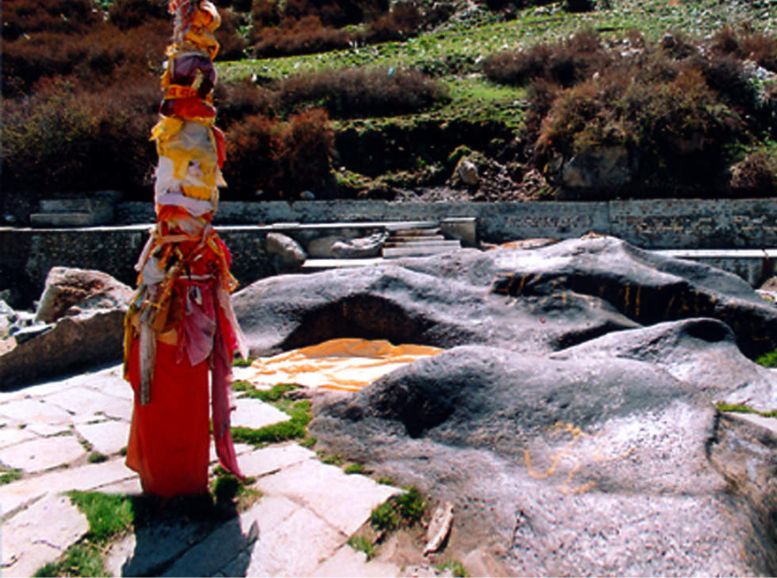
Perched along the serene banks of the Alaknanda River, Brahma Kapal emerges as a revered ghat where pilgrims solemnly engage in ancestral rites and prayers, aspiring for the transcendence and spiritual liberation of their departed kin. Rooted in Hindu traditions, the performance of shraddha (funerary rites) at Brahma Kapal is believed to facilitate the ascent of souls towards moksha (liberation from the cyclical realms of existence). At this hallowed site, pilgrims congregate, seeking divine benediction and grace to propel their ancestors’ souls towards eternal peace and spiritual evolution, thus fostering a profound connection between the earthly realm and the divine cosmos.
Bheem Shila:
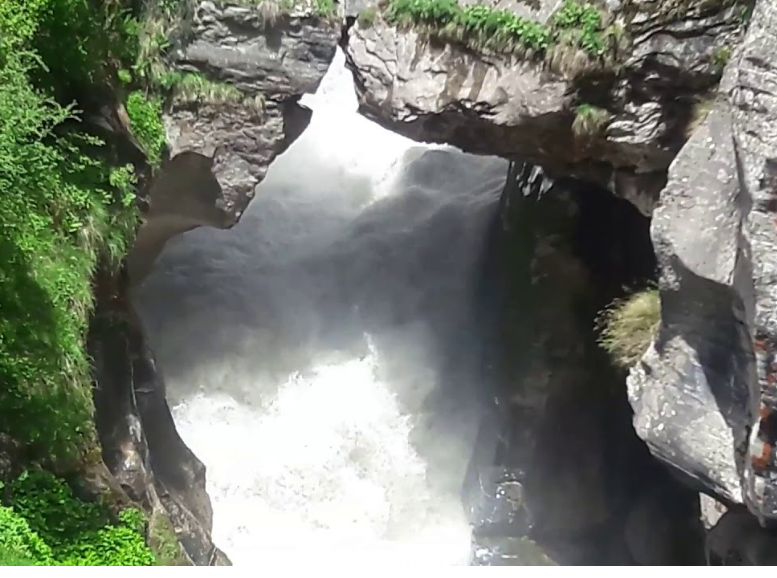
Bheem Shila stands as a monumental rock, steeped in mythological lore attributing its placement to Bheem, one of the illustrious Pandava brothers, during the mythical epoch of the Mahabharata. Pilgrims and wanderers alike are awestruck by the sheer magnitude and historical significance of Bheem Shila, serving as a tangible testament to the valor and divine narratives enshrined in ancient scriptures. As devotees offer prayers and homage at this sacred site, they invoke the blessings of Bheem, seeking his divine protection and guidance to illuminate their spiritual journey through the hallowed realms of faith and devotion.
Narayan Parbat:
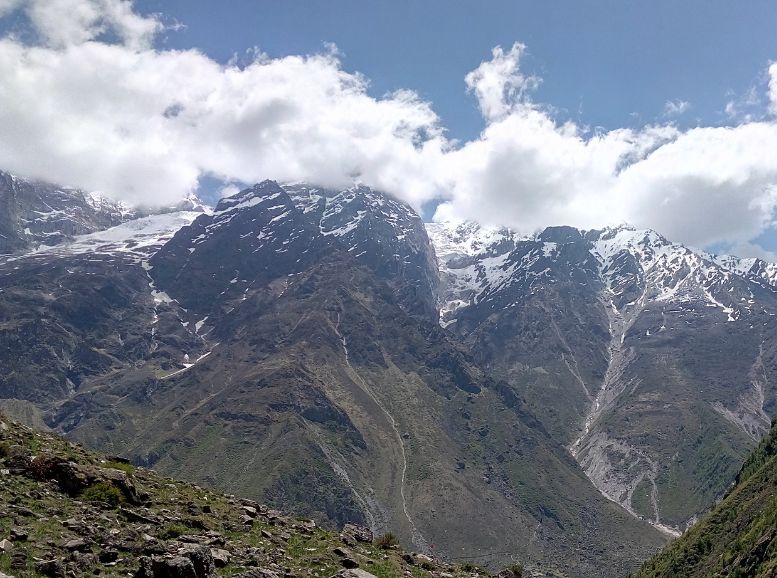
Held in reverence for its towering summits honoring Lord Vishnu, Narayan Parbat enchants both pilgrims and adventurers with its majestic allure. As it stands tall amidst the Himalayan expanse, Narayan Parbat serves as a tangible representation of Lord Vishnu’s divine dwelling, beckoning devotees in search of spiritual ascent and divine connection. Encircled by untouched wilderness and crowned with snow-capped peaks, Narayan Parbat provides a serene haven for those on the quest for truth and spiritual enlightenment, offering a sanctuary where seekers can delve deep into their spiritual pursuits amidst the tranquil embrace of nature’s grandeur.
Brahma Kapal Ghat:
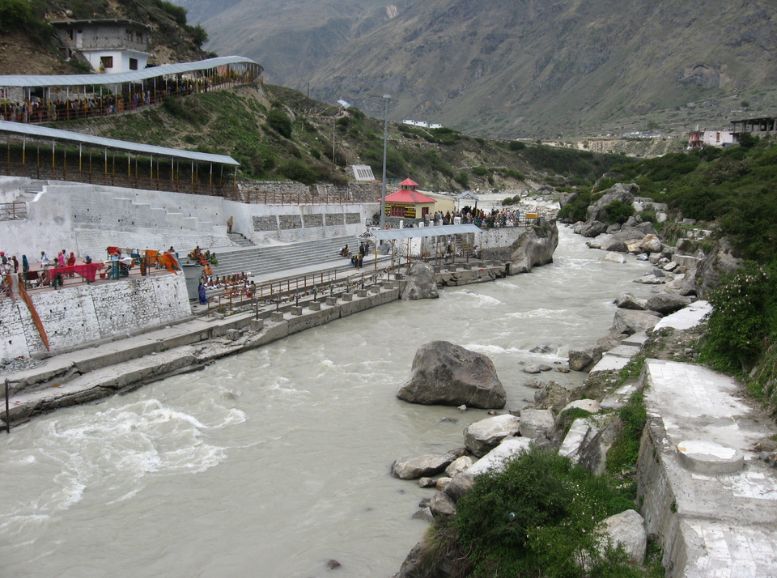
Situated alongside the sacred waters of the Alaknanda River, Brahma Kapal Ghat stands as a profound testament to spiritual reverence and ancestral homage. Pilgrims from far and wide converge at this revered ghat to pay homage to their forebears and solicit divine blessings for their spiritual odyssey. The tranquil aura enveloping Brahma Kapal Ghat, accompanied by the gentle murmurs of the holy river and the resonant chants of Vedic hymns, fosters an atmosphere of serene contemplation and inner harmony. Here, amidst the harmonious blend of nature’s whispers and sacred invocations, seekers find solace and embark on a journey of profound spiritual introspection.
Panch Badri Temples:
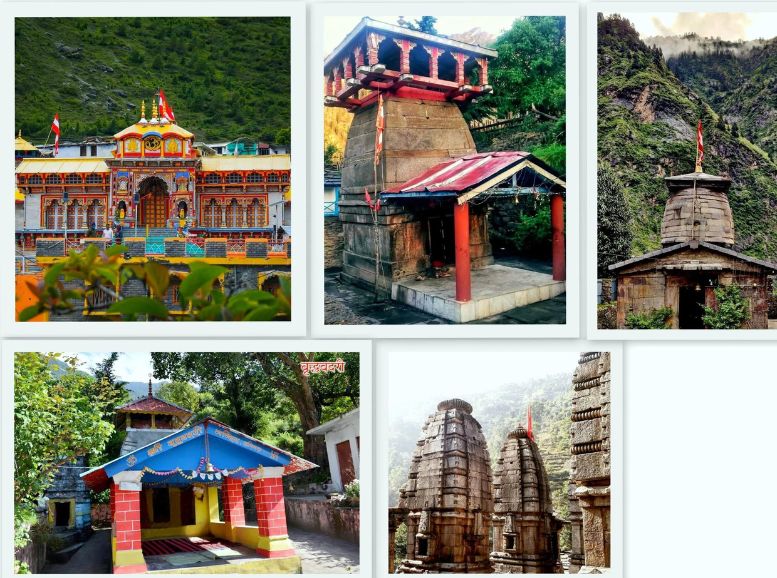
In addition to the renowned Badrinath Temple, Badrinath encompasses four other temples collectively referred to as the Panch Badri Temples. Each of these sanctuaries venerates distinct manifestations of Lord Vishnu and holds profound religious significance for devotees. The Panch Badri Temples, comprising Yogadhyan Badri, Bhavishya Badri, Vriddha Badri, and Adi Badri, present pilgrims with a distinctive spiritual journey, inviting them to delve into the rich tapestry of Lord Vishnu’s divine manifestations and heritage. These sacred sites offer devotees an unparalleled opportunity to immerse themselves in the timeless traditions and spiritual profundity associated with the worship of Lord Vishnu, fostering a deeper connection with the divine essence that permeates the holy land of Badrinath.
Beyond sightseeing:
Spiritual Retreats:
A haven for spiritual growth, Badrinath boasts retreats, ashrams, and meditation centers designed to deepen your yoga practice, meditation skills, and understanding of spiritual principles. These sanctuaries provide a supportive environment for self-reflection, exploration, and inner transformation, guided by knowledgeable teachers.
Pilgrimage Treks:
Undertake invigorating treks to revered pilgrimage sites and hidden Himalayan villages like Hemkund Sahib, Valley of Flowers, and Mana Village. These adventures offer not only physical challenges but also profound opportunities for spiritual exploration and cultural immersion as you traverse historic trails and connect with local communities.
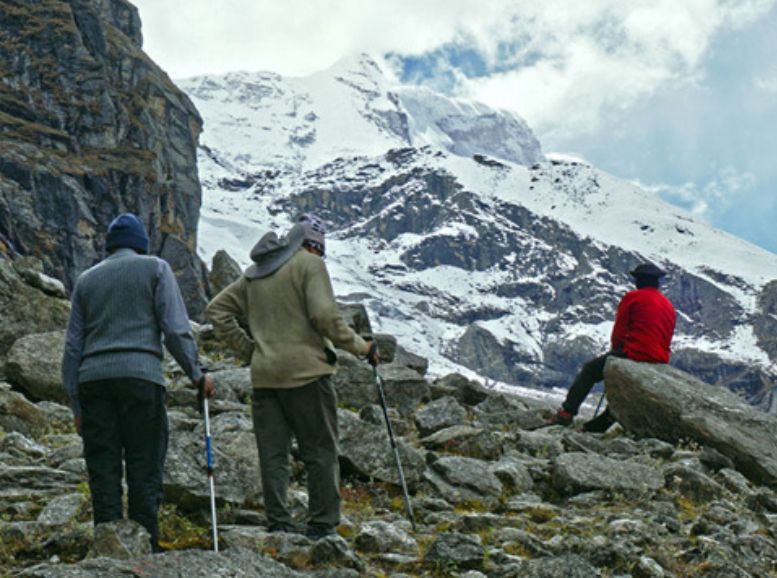
Participation in Religious Ceremonies:
Be a part of the soul-stirring daily rituals at the Badrinath Temple. Witness the morning and evening aartis (prayer offerings) and, if you wish, participate in prayers or even an abhishekam (sacred bathing ceremony of the deity). By engaging in these time-honored traditions, you’ll gain a deeper understanding of Badrinath’s rich religious heritage and immerse yourself in its vibrant spiritual atmosphere.
Cultural Experiences:
Immerse yourself in Badrinath’s vibrant cultural tapestry. Attend captivating performances, lively festivals, and bustling fairs that showcase the region’s artistic spirit through music, dance, and culinary delights. Engage with local artisans, musicians, and craftspeople to learn about the time-honored skills and cultural practices passed down through generations.
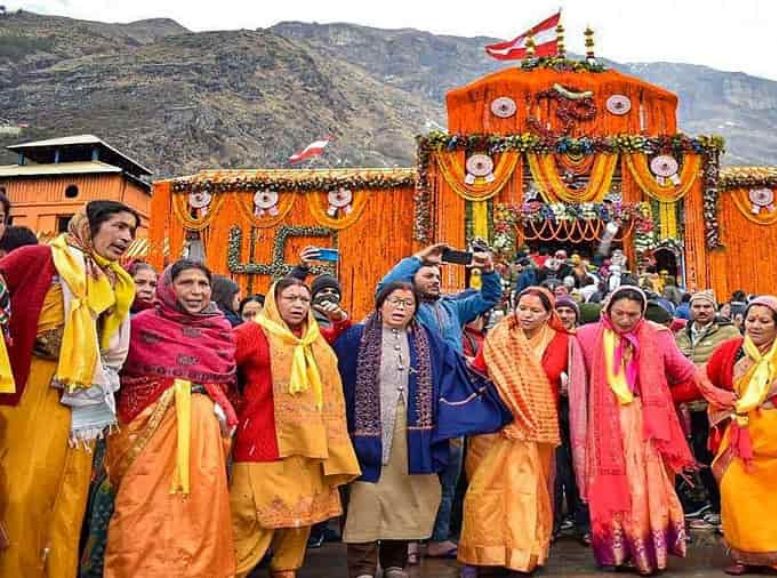
Local experiences:
Share a cup of chai (spiced tea) with friendly locals to learn about their daily life and customs. Visit tea stalls or join a family for a traditional tea ceremony.
Attend vibrant festivals, music, and dance performances showcasing Badrinath’s heritage. Immerse yourself in religious processions and colorful celebrations.
Explore bustling markets selling fresh produce, handicrafts, and local products. Engage with vendors and artisans to support their livelihoods and find unique souvenirs.
Stay with a local family for an immersive cultural experience. Participate in daily activities, learn cooking traditional meals, and discover local customs.
Visit lesser-known temples like Yogadhyan Badri (dedicated to Lord Vishnu in meditation posture), Adi Badri (considered the first temple of Lord Vishnu), and Narsingh Temple (dedicated to Lord Vishnu’s incarnation Narasimha).
Foodie delights:

- Local Delicacies: Explore Garhwali cuisine with dishes like Aloo ke Gutke, Mandua ki Roti, and Kafuli, showcasing authentic mountain flavors.
- Street Food: Discover savory snacks like Kachoris, Pakoras, and Samosas in Badrinath’s bustling markets, brimming with Himalayan spices.
- Tea Stalls: Enjoy Masala Chai or Kahwa with crispy snacks like Mathris or Namkeen at tea stalls amidst the serene Himalayan backdrop.
- Sweets and Desserts: Indulge in treats like Bal Mithai, Singodi, and Jhangora ki Kheer, offering a perfect blend of sweetness and richness.
- Pahadi Thali: Experience Himalayan flavors with a traditional Pahadi Thali featuring dal, vegetables, rice, roti, and chutneys.
Travel tips:
- Plan Ahead: Badrinath is located in a remote region with limited facilities, so it’s essential to plan your trip in advance. Book accommodations, transportation, and permits well ahead of time, especially during peak pilgrimage seasons.
- Pack Wisely: Due to the high altitude and varying weather conditions, pack appropriate clothing layers, including warm clothing, rain gear, and sturdy hiking shoes. Don’t forget essentials like sunscreen, sunglasses, and a hat to protect against the sun’s glare at higher elevations.
- Altitude Considerations: Badrinath is situated at an altitude of over 3,000 meters (10,000 feet), so acclimatization is crucial, especially if you’re arriving from lower elevations. Take it easy upon arrival, stay hydrated, and consider spending a day or two in a lower-altitude destination like Joshimath to adjust before ascending to Badrinath.
- Travel Routes: Be prepared for a long journey to Badrinath, as road access to the town involves winding mountain roads. If you’re driving, ensure your vehicle is in good condition and be cautious while navigating steep inclines and sharp turns. Alternatively, consider hiring a local driver who is familiar with the terrain.
- Respect Local Customs: Badrinath is a sacred pilgrimage site for Hindus, so dress modestly and respect local customs and religious practices. Remove your shoes before entering temples and other religious sites, and refrain from taking photographs in areas where it’s prohibited.
- Stay Hydrated and Rested: The high altitude and strenuous travel conditions can take a toll on your body, so stay hydrated by drinking plenty of water and taking regular breaks to rest and acclimatize. Pace yourself while exploring the town and surrounding areas to avoid altitude sickness or exhaustion.
Transportation:
Reaching Badrinath, nestled amidst the Himalayas, is a journey in itself. A well-maintained road network connects the holy town to major Uttarakhand cities like Rishikesh, Haridwar, Dehradun, and Joshimath, offering scenic drives with taxis, jeeps, or buses. For those arriving by air, Jolly Grant Airport in Dehradun (around 320 km away) offers connections to major Indian cities, followed by a taxi or bus ride via Rishikesh and Joshimath. Haridwar and Rishikesh stations are the nearest rail options, with onward travel to Badrinath through Joshimath by taxi or bus. During peak season, helicopter services provide a faster and scenic route from Dehradun. Once in Badrinath, explore local attractions or embark on higher altitude treks by taxi, jeep, or even a traditional pony ride.
Conclusion
Concluding a visit to Badrinath entails a captivating fusion of spirituality and natural allure amidst the Himalayas. This journey offers pilgrims and adventurers a profound experience, characterized by revered temples and serene landscapes. For expert guidance and personalized itineraries, visitors can rely on Xplro.com, their ultimate companion for exploring the divine realm of Badrinath.
FAQs
- What is the best time to visit Badrinath?
- Badrinath is best visited from May to June and September to October, during the summer and early autumn months when the weather is pleasant and the temple accessible.
- How do I reach Badrinath?
- Badrinath can be reached by road from cities like Rishikesh, Haridwar, and Dehradun. The nearest airport is in Dehradun, and the closest railway stations are in Haridwar and Rishikesh.
- Are there any accommodation options in Badrinath?
- Yes, Badrinath offers various accommodation options, including hotels, guesthouses, and dharamshalas (pilgrim lodges), catering to the needs of visitors.
- What are the main attractions in Badrinath?
- Major attractions in Badrinath include the Badrinath Temple, Tapt Kund, Neelkanth Peak, Mana Village, and the Bheem Pul.
- What clothing should I pack for my trip to Badrinath?
- It’s advisable to pack warm clothing such as sweaters, jackets, and woolens, even during summer months, as the weather can be cold, especially at higher altitudes.
- Is there any medical facility available in Badrinath?
- Yes, Badrinath has government and private medical facilities to address the healthcare needs of visitors, including a government hospital.
- Are there any restrictions or guidelines for visiting the Badrinath Temple?
- Yes, visitors are required to dress modestly and remove footwear before entering the temple. Photography inside the temple is usually prohibited.
- Can I trek in the surrounding areas of Badrinath?
- Yes, several trekking routes and trails, such as the Valley of Flowers trek and Hemkund Sahib trek, are available in the surrounding areas.
- What are the local cuisines and food options available in Badrinath?
- Local cuisines include Garhwali dishes like Aloo ke Gutke, Mandua ki Roti, and Kafuli, along with various eateries offering North Indian and vegetarian food.
- Are there any nearby places of interest to visit from Badrinath?
- Nearby attractions include Mana Village, Vasudhara Falls, Satopanth Lake, and the Valley of Flowers.
- What are the weather conditions like in Badrinath throughout the year?
- Weather in Badrinath is cold year-round, with temperatures dropping below freezing during winters. Summers are cool with pleasant daytime temperatures.
- What safety measures should I take during my visit to Badrinath?
- Visitors should take precautions against altitude sickness, stay hydrated, and dress warmly, particularly during winters. It’s also essential to follow safety guidelines while trekking and respect local customs.





